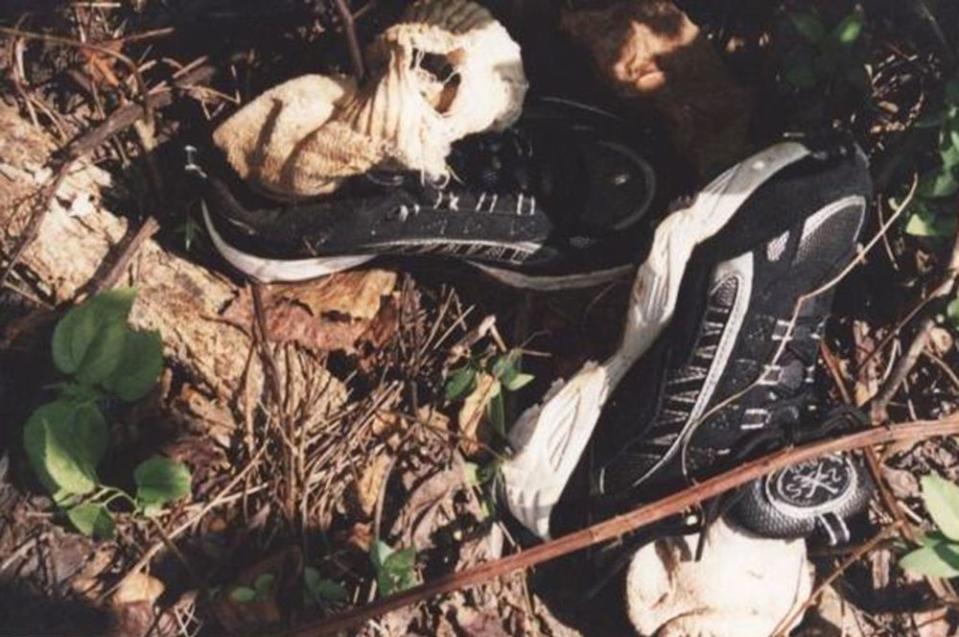Skeleton of Strangled Boy Abandoned by an Interstate May Finally Be Identified — and Killer Found
By the time a landscaping crew discovered the little boy’s body beneath a billboard along Interstate 85 in the small town of Mebane, North Carolina, he was nothing more than a skull and bones and the clothing he wore when his remains were left behind.
Twenty years later, authorities still don’t know who the dead boy is — no name, no known family and no suspects in his apparent strangulation. He is still listed as “John Doe” on the National Center for Missing and Exploited Children.
But investigators aren’t giving up and, according to one longtime official, they may be as close as ever to the truth.
“I’m hopeful,” Maj. Tim Horne, with the Orange County Sheriff’s Office, tells PEOPLE. “I’m really hopeful this case will be solved.”
Horne, 50, was one of those who worked the crime scene in September 1998, when the remains of the young John Doe were found about an hour outside Raleigh, North Carolina.
According to Horne, authorities believe the boy was between 9 and 12 years old when he was killed and his body dumped in the summer of 1998, possibly that June or July. The adjacent interstate would have made for an easy getaway.
The case was officially ruled a homicide. By process of elimination, the medical examiner determined the boy likely died from strangulation.
But other avenues were more difficult or else failed to lead anywhere, Horne says.
“We didn’t have a lot of success initially. In the vast majority of cases, people are killed by someone they know and therefore if you don’t know who they are it handicaps the investigation,” he says. “You gotta remember: in 1998, DNA was still fairly new.”

Investigators were able to use the clothing the boy was found in and the sneakers he was wearing to garner some promising information, such as that his shoes were purchased from a Walmart sometime around or after February 1998.
Law enforcement tried to narrow down the part of the country where the shoes were sold, however, but came up empty.
Investigators also worked with the Secret Service: $50 was found rolled up in the boy’s pocket — but the serial numbers on the bills led nowhere and fingerprints were not found on the money.
Within a few months, the case had gone cold.
A 29-year veteran of the sheriff’s office, Horne just delayed his retirement six months in hopes of solving the mystery, which has nagged at him ever since. “There are a few cases that stick with you your entire career, and this is one of those cases,” he says.
Horne still keeps a box of evidence in his office — he says he works on the investigation at least one a week — and long ago realized realized that he’d have to wait for more advanced technology to become available to help him.
• Want to keep up with the latest crime coverage? Click here to get breaking crime news, ongoing trial coverage and details of intriguing unsolved cases in the True Crime Newsletter.
In 2011, Horne worked with renowned forensic sculptor Frank Bender, known for helping law enforcement identify previously unidentifiable remains, and Bender, dying of cancer at the time, did his last bust of John Doe.
“Watching Frank create the bust of the little boy was a strange and absorbing process,” says Karen Mintz, who has spent seven years working on a documentary about Bender called Does Anyone Know My Name?
“At first you are looking at only a skull and you wonder, ‘What happened to this person?’ Then you watch the features emerge, until finally he begins painting the eyes,” Mintz tells PEOPLE. “Now you ask yourself, ‘Who are you?’ It becomes personal and this is a child, so the drive is even more powerful.
“Someone out there knows this boy and it’s my great hope that that Frank’s last work may bring peace and closure to one more family.”
As criminal science advanced, Horne has continued to push for new forms of investigation, including testing the insects found under the boy’s bones and conducting an isotope analysis — using the molecules in his bones and teeth — to help narrow down where in the country the boy grew up.

Testing showed he “spent most of his life in the Southeastern U.S.,” Horne says.
After years of frustrating dead ends, a pollen test from the original scene recently helped give Horne one additional clue that he’s hoping could crack the case. Each geographic region has a different pollen count and tests showed tress consistent with Northern Georgia and Northern Alabama, meaning the boy spent a significant amount of time in one of those places.
New genetic testing has also confirmed that the boy is of European and East Asian descent, disputing the long-held belief that he was Hispanic.
Horne tells PEOPLE he was stupefied when he heard the results: “After 20 years we just now get this and the experts we’ve worked with all along have been wrong?”
With a new sketch and age progression photo of young John Doe, Horne thinks that, at last, they may find the answers they’ve been searching for.
“It was much more frustrating early on,” Horne says. “Once you got in mindset that this is not a sprint, that it’s a marathon, it became much easier to deal with.”
Anyone with information about the case is asked to call Maj. Horne at the Orange County Sheriff’s Office at 919-245-2920.

